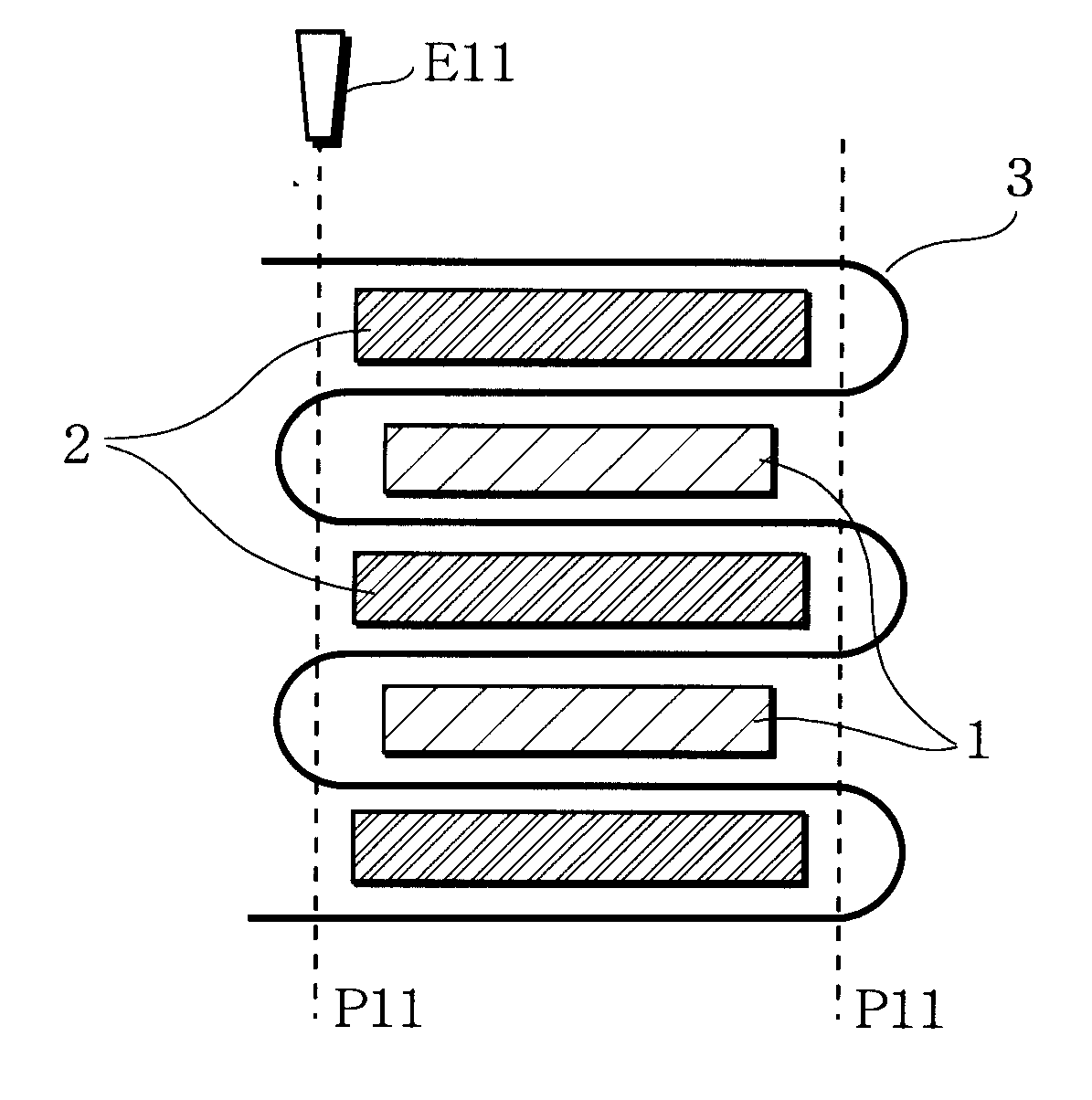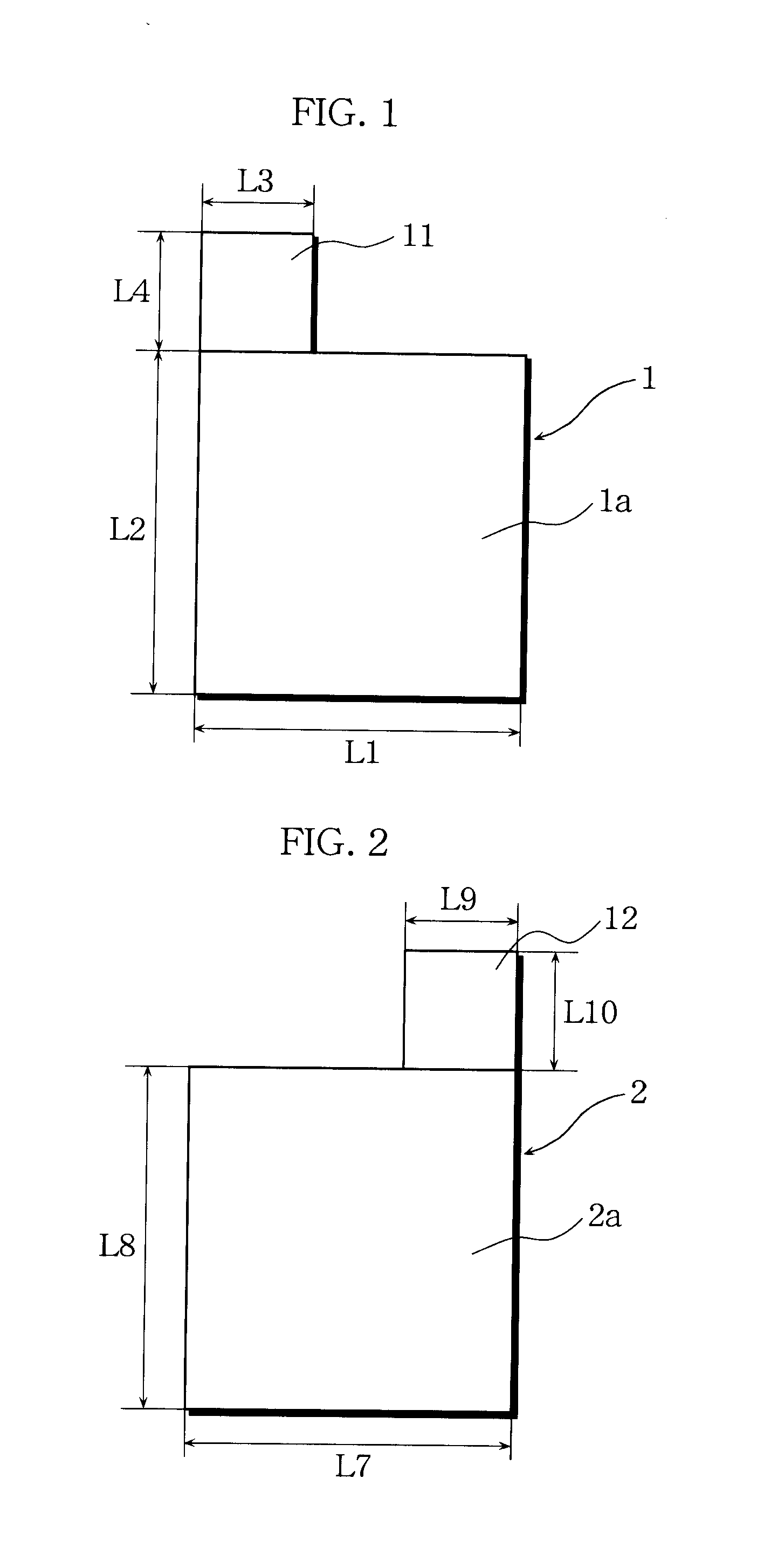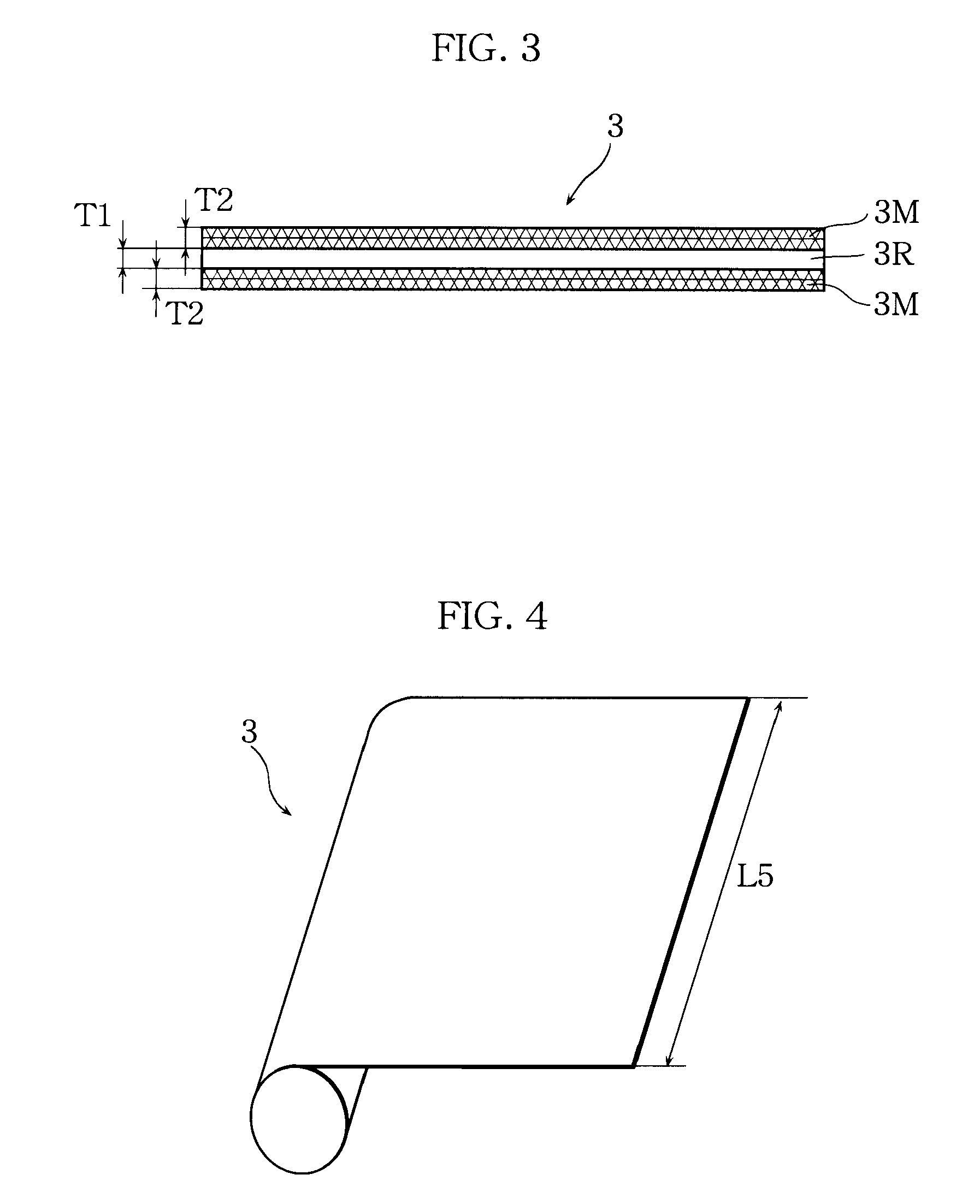Stack type battery
a technology of stacking batteries and stacking plates, applied in the field of stacking batteries, can solve the problems of affecting the safety of users, and unable to serve the function of separating devices, and achieve the effect of high degree of safety
- Summary
- Abstract
- Description
- Claims
- Application Information
AI Technical Summary
Benefits of technology
Problems solved by technology
Method used
Image
Examples
example 1
[0049]A stack type battery fabricated in the same manner as described in the foregoing embodiment was used as the stack type battery of this example.
[0050]The battery fabricated in this manner is hereinafter referred to as Battery A1 of the invention.
[0051]In the following examples and the drawings, parts and components that are or similar to those described in the foregoing embodiment and Example 1 above as well as in FIGS. 1 through 10 are denoted by like reference numerals and symbols, and no further details thereof are given unless necessary.
example 2
[0062]As illustrated in FIG. 11, the same separator 3 as used for the above-described Battery A1 of the invention was cut at a width of every 110 mm into 22 sheets of square-shaped separator portions 3a. In each one of the gaps between the positive and negative electrode plates 1 and 2 and on each one of the outermost faces, one sheet of the separator portion 3a was disposed so that a stack unit was constructed. Subsequently, as illustrated in the same figure, the metal terminal Ell heated at 200° C. was brought into contact with the separator portions 3a at weld positions P12 around the negative electrode plates 2 from the outermost face side, so that the separator portions 3a in the respective layers could be thermally welded and fixed together with the stacked positive and negative electrode plates 1 and 2. Thus, a stacked electrode assembly 100 shown in FIGS. 12 and FIG. 13 was obtained. A stack type battery was fabricated in the same manner as in the case of the foregoing Batte...
example 3
[0065]As illustrated in FIG. 14, a heat-melting layer 30M made of polyethylene (PE) and having a thickness T4=10 μm was formed over the entire surface of one side of a heat-resistant layer 30R made of an aramid resin and having a thickness T3=10 μm, to form a two-layer structure having a total thickness of T3+T4=20 μm. Thus, a separator 30 having a height of 110 mm was prepared. Next, the separator 30 was cut at a width of every 110 mm into 22 sheets of square-shaped separator portions 30a. Then, as illustrated in FIG. 15, in each one of the gaps between the positive and negative electrode plates 1 and 2 and on each one of the outermost faces, one sheet of the just-described separator portion 30a was disposed, whereby a stack unit was constructed. Subsequently, as illustrated in the same figure, the metal terminal E11 heated at 200° C. was brought into contact with the separator portions 30a at weld positions P13 around the negative electrode plates 2 from the outermost face side, t...
PUM
| Property | Measurement | Unit |
|---|---|---|
| temperature | aaaaa | aaaaa |
| temperature | aaaaa | aaaaa |
| temperature | aaaaa | aaaaa |
Abstract
Description
Claims
Application Information
 Login to View More
Login to View More - R&D
- Intellectual Property
- Life Sciences
- Materials
- Tech Scout
- Unparalleled Data Quality
- Higher Quality Content
- 60% Fewer Hallucinations
Browse by: Latest US Patents, China's latest patents, Technical Efficacy Thesaurus, Application Domain, Technology Topic, Popular Technical Reports.
© 2025 PatSnap. All rights reserved.Legal|Privacy policy|Modern Slavery Act Transparency Statement|Sitemap|About US| Contact US: help@patsnap.com



